#MC-130J
Explore tagged Tumblr posts
Text

Lockheed MC-130J Commando II - RIAT 2018
#AFSOC#Lockheed#AC-130#MC-130J#Commando II#special operations tanker#combat transport#special mission#aircraft#Military aviation#RIAT#airshow#Fairford
29 notes
·
View notes
Text

Moments after a thunderstorm...😆
MC-130J 12-5762 1SOS/353SOW
#AvGeek #mc130 #afsoc #woody71 #yokota #aviation #aviationphotography #planespotting
@Golf9photos via X
6 notes
·
View notes
Text

No runway? No problem! 🚧 An MC-130J Commando II landed on Highway 287, a Wyoming roadway linked to U.S. Air Force Agile Combat Employment. ACE uses smaller, more dispersed locations & teams to move aircraft, pilots, & personnel turning roads into runways.
Twitter
23 notes
·
View notes
Text

A US Air Force CV-22 Osprey from the 20th Special Operations Squadron approaches an MC-130J Commando II during a night flight at Cannon Air Force Base, New Mexico, 12 September 2024
136 notes
·
View notes
Text

Commando II 11-5731 Lockheed Martin MC-130J Super Hercules
11 notes
·
View notes
Text

A Green Beret from 10th Special Forces Group (Airborne) watches the loading of U.S. Air Force MC-130J Commando II for a RAPIDS infil during Operation Polar Dagger in Wales, Alaska.
Staff Sgt. Mason Tran / US Army, August 17, 2024
8 notes
·
View notes
Text
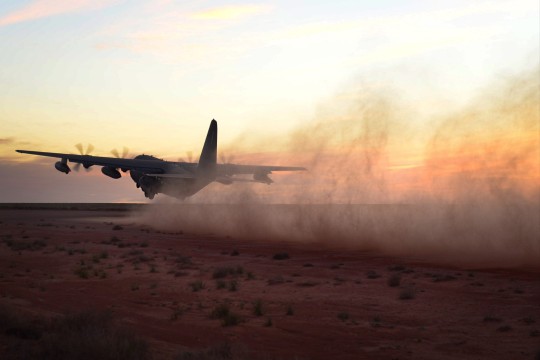
MC-130J Commando II takes off April 2, 2015, at Melrose Air Force Range, NM.
63 notes
·
View notes
Quote
フロート付けた状態でどうやってC-130に積むような重量物を搬入・搬出するのか分からないが、アメリカなら何とかしそう (はっ、C-130に積める大発… )
[B! 軍事] US-2救難飛行艇へ関心寄せるアメリカ特殊作戦軍、「MC-130J」水陸両用機の開発計画すすむ | FlyTeam ニュース
2 notes
·
View notes
Link
0 notes
Text
USAF:n MC-130J Hercules ja Suomen Ilmavoimien F/A-18 Hornet suorittavat ylilennon Helsingissä 14.6. | lentoposti.fi
0 notes
Text

AC-130J Ghostrider Gunship Has Operated From A Highway For The First Time
Operating from highways could make AC-130J gunships more survivable and flexible, but questions remain about their role in high-end fights.
Joseph Trevithick Posted on Aug 5, 2024 1:51 PM EDT
The US Air Force says an AC-130J Ghostrider gunship has operated from a highway for the first time as part of the service's larger push to reduce its dependence on traditional runways. This is also comes amid questions about the future of the gunships in future high-end fights.
USAF capture
An AC-130J Ghostrider gunship has operated from a highway for the first time during a recent exercise, according to the U.S. Air Force. This reflects a push across the U.S. military to be less dependent on traditional runways and established bases that would be high-priority targets for enemy forces during a future major conflict, such as one in the Pacific against China. This also comes as hard questions are being asked about what roles and missions there might be for the AC-130J in a high-end fight after the type has spent the past two decades supporting counter-terrorism and other lower-intensity operations.
The AC-130J in question landed on and then subsequently took off from a stretch of U.S. Highway 63 in Bono, Arkansas, on August 4 as part of the larger Emerald Warrior Field Training Exercise II (FTX II). An MC-130J Commando II special operations tanker-transport, a C-146A Wolfhound special operations light transport aircraft, and a standard C-130H cargo plane also participated in the road operations training. With the exception of the C-130H, all of these aircraft were from units assigned to Air Force Special Operations Command (AFSOC). The C-130H was from the Arkansas Air National Guard’s 189th Airlift Wing.
“The MC-130J crew then set up a Forward Arming and Refueling Point (FARP), as the AC-130J assigned to the 1st Special Operations Wing at Hurlburt Field, Florida, made its approach, landed, refueled, rearmed, and took off again,” according to an Air Force release. “The primary objective of this exercise was to validate AFSOC’s capability to operate in austere environments with minimal infrastructure.”
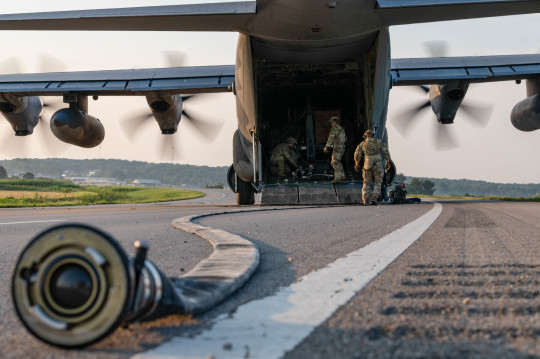
A picture showing personnel setting up the Forward Arming and Refueling Point (FARP) using the MC-130J as the hub during the road operations portion of Emerald Warrior FTX II. USAF Senior Airman Ty Pilgrim
“The exercise provided an opportunity for participating units to refine their skills and advance ongoing pathfinding and experimentation efforts within AFSOC,” the release added.
A picture for the road operations portion of Emerald Warrior FTX II showed what appears to be a Common Launch Tube (CLT) being unloaded from a transit canister. What other munitions Air Force personnel may have practiced loading aboard the AC-130J in this austere environment is unclear.

What looks to be a Common Launch Tube (CLT) being unloaded during the road operations portions of Emerald Warrior FTX II. USAF Senior Airman Ty Pilgrim
The AC-130J’s current armament package consists of a 30mm automatic cannon and a 105mm howitzer that fire out the left side of the aircraft, as well as the ability to employ a variety of precision-guided bombs and missiles. This includes precision munitions that are launched via CLTs, such as the GBU-44/B Viper Strike glide bomb and AGM-176 Griffin missile.
“This exercise serves as a significant milestone for AFSOC, demonstrating our ability to operate in diverse and austere environments,” Tech. Sgt. Robert Gallagher, assigned to the AFSOC Air Commando Development Center, who acted as the lead planner for the highway landings, said, according to the Air Force release. “By leveraging ACE concepts, we enhance our operational flexibility and resilience.”
ACE here stands for Agile Combat Employment, which refers to a set of concepts of operations centered on expeditionary and distributed deployments that occur at irregular intervals across a broadening number of operating locations. The core function of ACE is to upend enemy targeting cycles, and by extension reduce the vulnerability of friendly forces, by operating in a less predictable fashion. The video at the top of this story from Emerald Warrior FTX II highlights all of this by showing the AC-130J being able to get in and out relatively quickly. The C-130 family’s impressive reverse thrust capability is on display, as well.
Being able to operate from remote and austere environments, such as highways, is a key element of current ACE planning. As such, the Air Force special operations aircraft, like MC-130Js and C-146As, as well as conventional ones, like A-10 Warthog ground attack aircraft and standard C-130 cargo planes, have been conducting road operations training on an increasingly regular basis. MQ-9 Reaper drones have also participated in similar exercises in the past.

Other services have been involved in this new burst of roadway exercises in the past few years. The U.S. Marine Corps has also been very actively training to use roads and other alternatives to large traditional runways as part of the service’s own array of new expeditionary and distributed concepts of operations.
AFSOC, as well as other elements of the U.S. special operations community, already have a long history of operating from impromptu forward locations, often in sensitive or denied areas, but generally on a more ad-hoc mission-to-mission basis.
“We’ve recently been returning to tactics, techniques, and procedures to find out where all of the 3,000-foot straight highways in the world are” as part of a broader push to become “runway agnostic,” Air Force Lt. Gen. Tony Bauernfeind, then head of AFSOC, said last year. Bauernfeind is now superintendent of the United States Air Force Academy.
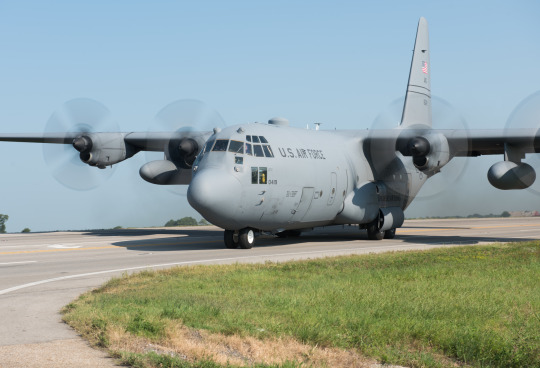
The C-130H from the 189th Airlift Wing on during the road operations portion of Emerald Warrior FTX II. Air National Guard Airman 1st Class Samuel Zang
For AC-130Js operating in their traditional special operations support role, being able to operate from roads and other remote locations on a more general basis could help allow them to fly (as well as refuel and rearm) closer to designated operating areas. This could increase their time on station and shorten how long it might take them to get to and from where they need to be, as well as just generally expand their operational flexibility.
At the same time, as the U.S. military shifts its main focus away from counter-terrorism and other low-intensity missions to preparing for high-end operations, especially in a potential future conflict against China, questions have emerged about AC-130J’s future. Even during the past two decades of support operations in largely permissive airspace over places like Iraq and Afghanistan, AC-130 gunships have operated almost exclusively at night in part to reduce vulnerability to potential threats from the ground. The War Zone just explored these broader issues facing the Ghostrider in the context of a rare appearance by one of the gunships at a sinking exercise (SINKEX) during the larger biennial Rim of the Pacific (RIMPAC) exercise, which just wrapped last week.
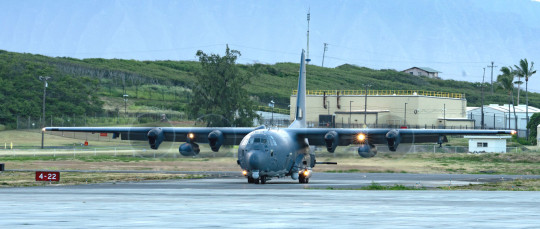
An AC-130J from the 27th Special Operations Wing at Marine Corps Air Station Kaneohe Bay in Hawaii during RIMPAC 2024. USAF
The Air Force is in the midst now of a review of the Ghostrider’s current and future capabilities that could lead to the aircraft losing their iconic, but relatively short-ranged 105mm howitzers. A plan to integrate a laser-directed energy weapon, described originally as having immense potential in lower-intensity warfare contexts, has already been scrapped.
There is growing emphasis now on increasing the AC-130J’s stand-off strike capabilities, including through the addition of small cruise missiles to the Ghostrider’s arsenal. The Air Force is looking into the potential of using other C-130 variants, including MC-130Js, as well as the C-17, as launch platforms for larger cruise missiles and other munitions using a palletized system called Rapid Dragon.

In addition, AFSOC is interested in adding a new active electronically scanned array (AESA) radar to the AC-130Js to help extend the reach of their targeting capabilities, as well as provide added situational awareness. The gunships have already been receiving upgrades to their electronic warfare and communications suites.
The AC-130J, its capabilities, and its roles and missions appear set to evolve significantly in the coming years. Operating more regularly from highways and other roads looks now to be on the horizon for the Ghostriders.
Contact the author: [email protected]
16 notes
·
View notes
Text

8 notes
·
View notes
Photo
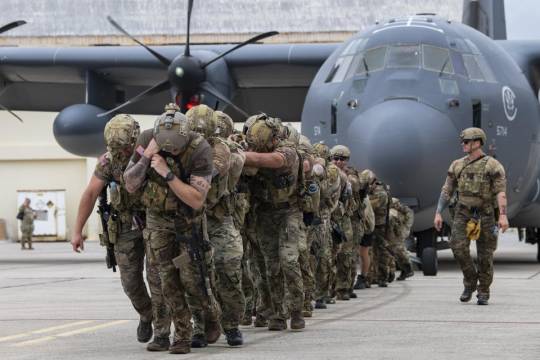
U.S. Air Force special tactics Airmen with the 320th Special Tactics Squadron pull an MC-130J Commando II across the flightline during Monster Mash, an operational readiness and resilience training exercise May 5, 2023, at Kadena Air Base, Japan
186 notes
·
View notes


